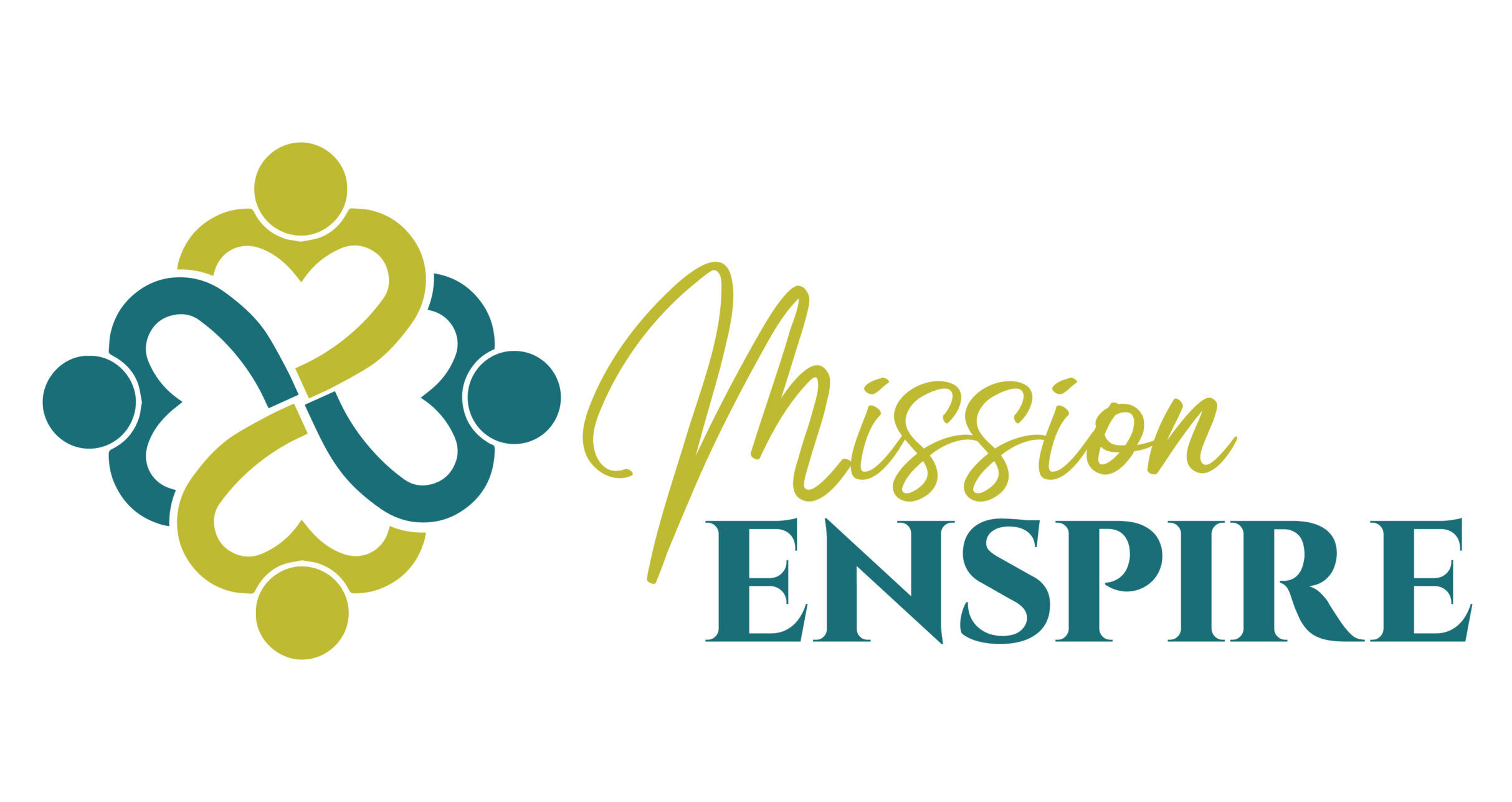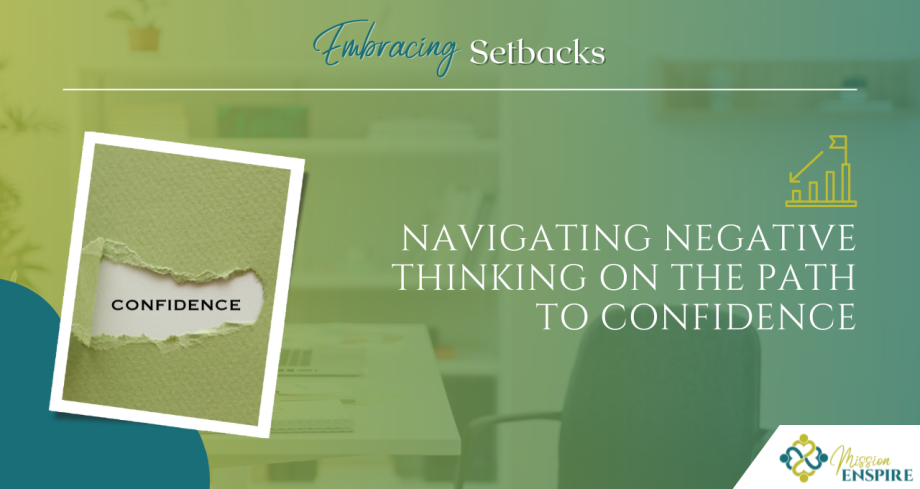Setbacks are inevitable on any journey of growth and self-improvement. Whether in our careers, personal lives, or entrepreneurial pursuits, we will all face obstacles that challenge our confidence. But what if we viewed setbacks not as failures but as stepping stones to greater resilience and self-trust? In my last post, we explored how courage and confidence fuel our ability to take action, but even the most courageous among us encounter setbacks. The real test of confidence isn’t just in stepping forward—it’s in how we respond when things don’t go as planned. Today, I want to dive into how we can navigate setbacks, manage negative thinking, and emerge stronger and more confident on the other side.
The Impact of Negative Thinking
Our inner critic can be our greatest obstacle. Thoughts like “I’m not good enough” or “What if I fail?” can paralyze us. However, negative thinking doesn’t have to derail your progress. By recognizing and challenging these thoughts, you can transform them into a source of motivation.
I’ve faced this in my entrepreneurial journey. Not every idea worked, but every setback offered a valuable lesson. After a workshop didn’t meet expectations, I took time to reflect and adjust my approach, leading to a more impactful experience in future sessions. Likewise, in my professional career, there were moments where I felt overwhelmed by competing priorities. Last year, I struggled to balance my leadership responsibilities while also growing my business. It felt like no matter how much effort I put in; I was always falling short somewhere. But by taking a step back, reassessing my goals, and prioritizing what truly mattered, I was able to regain my footing.
Common Cognitive Distortions and How to Reframe Them
- Catastrophizing: Assuming the worst possible outcome will happen. Instead of thinking, “This failure will ruin everything,” reframe it as, “This setback is a learning experience that will help me grow.”
- Personalization: Taking responsibility for things outside your control. Instead of thinking, “It’s my fault the team didn’t succeed,” try, “I did my best, and external factors played a role.”
- All-or-Nothing Thinking: Seeing situations in black and white. Instead of thinking, “If I fail once, I’ll never succeed,” shift to, “Every step forward is progress, even if it isn’t perfect.”
Strategies for Managing Negative Thinking
Overcoming negative thinking starts with intentional strategies that help us reframe our mindset and build resilience. Here are a few practices that have helped me and can support you:
- Practice Self-Compassion: Instead of harsh self-criticism, treat yourself with the same kindness and understanding you’d offer a friend. In my January 2024 series about cultivating a positive mindset, we explored how shifting your inner dialogue can set the foundation for growth. If something doesn’t go as planned, remind yourself that failure is part of success, not the opposite of it.
- Revisit Your “Why”: When setbacks shake your confidence, reconnecting with your purpose can reignite your motivation. In my early days as a public speaker, I almost turned down my first opportunity. The fear of ‘what if I fail?’ loomed large. What helped to minimize the fear and quiet the negative thinking was preparing, practicing, and leaning into my community for encouragement.
- Use Small Wins to Rebuild Confidence: Setbacks can make us feel like we’re back at square one, but recognizing small wins can help shift that mindset. In October, we discussed the importance of discipline and gratitude in achieving long-term success. One way to navigate setbacks is through gratitude journaling—reflecting on lessons learned rather than fixating on what went wrong.
- Lean on Your Support System: Surrounding yourself with people who uplift and encourage you can make all the difference. When I struggled to balance my leadership responsibilities while growing my business, I felt like I was falling short everywhere. But by reassessing my priorities and seeking guidance from mentors, I was able to regain clarity and move forward with renewed confidence.
The Power of Reframing Setbacks
When we encounter setbacks, our initial reaction is often frustration, disappointment, or self-doubt. However, shifting our perspective can make all the difference. Just as we discussed in my post about micro habits, small consistent actions can help rebuild confidence after setbacks. Whether it’s writing one positive affirmation or taking one small step forward, progress is made in the moments when we choose persistence over perfection.
Personally, I’ve faced numerous setbacks throughout my journey—particularly when launching my business, Mission ENSPIRE. There were moments when I questioned if I was on the right path. A project that didn’t gain traction or a slow season in revenue could have easily made me give up. But instead, I leaned on my support system, revisited my goals, and took small but intentional steps forward. Looking back, I realize those setbacks were necessary stepping stones to building something sustainable.
Building Resilience Through Setbacks
Resilience is the ability to recover from difficulties, and it plays a crucial role in confidence-building. Developing resilience involves shifting our mindset and cultivating habits that allow us to bounce back stronger. Here are some practical exercises to strengthen resilience:
- Journaling for Reflection: Write about a recent setback and explore what you learned from it. Identify at least one positive takeaway.
- Gratitude Practice: List three things you are grateful for, even in the midst of challenges. Gratitude shifts focus from failure to opportunity.
- Visualization: Picture yourself, overcoming the setback and moving forward. This mental exercise rewires your brain to approach challenges with confidence.
- Affirmations: Replace negative self-talk with positive affirmations. For example, “I am capable of handling challenges and learning from them.”
The Confidence Roadmap
The journey to self-confidence isn’t linear. It’s a dynamic process requiring courage, resilience, and adaptability. By adopting a long-term perspective, you can build confidence that endures through life’s highs and lows.
- Set Intentional Goals: Define clear, actionable goals that align with your values and passions.
- Embrace Lifelong Learning: Commit to ongoing growth through experiences and self-development.
- Cultivate Gratitude: Regularly reflect on accomplishments and the support you’ve received.
- Mentor and Be Mentored: Sharing your journey fosters personal and collective growth.
- Celebrate Progress: Confidence isn’t built solely on reaching the destination—acknowledge each milestone along the way.
Moving Forward with Hope and Resilience
If setbacks are inevitable, then hope is essential. It’s what allows us to believe in the possibilities ahead, even when obstacles appear. As I wrote last fall, discipline and gratitude are key ingredients for long-term success. Even in the face of setbacks, practicing gratitude allows us to reframe our challenges and focus on opportunities for growth.
In my next post, I’ll explore how hope fuels growth and how to cultivate it in our daily lives. Until then, I invite you to reflect—how have your setbacks shaped your journey? What lessons have you gained, and how will you move forward with renewed confidence?

